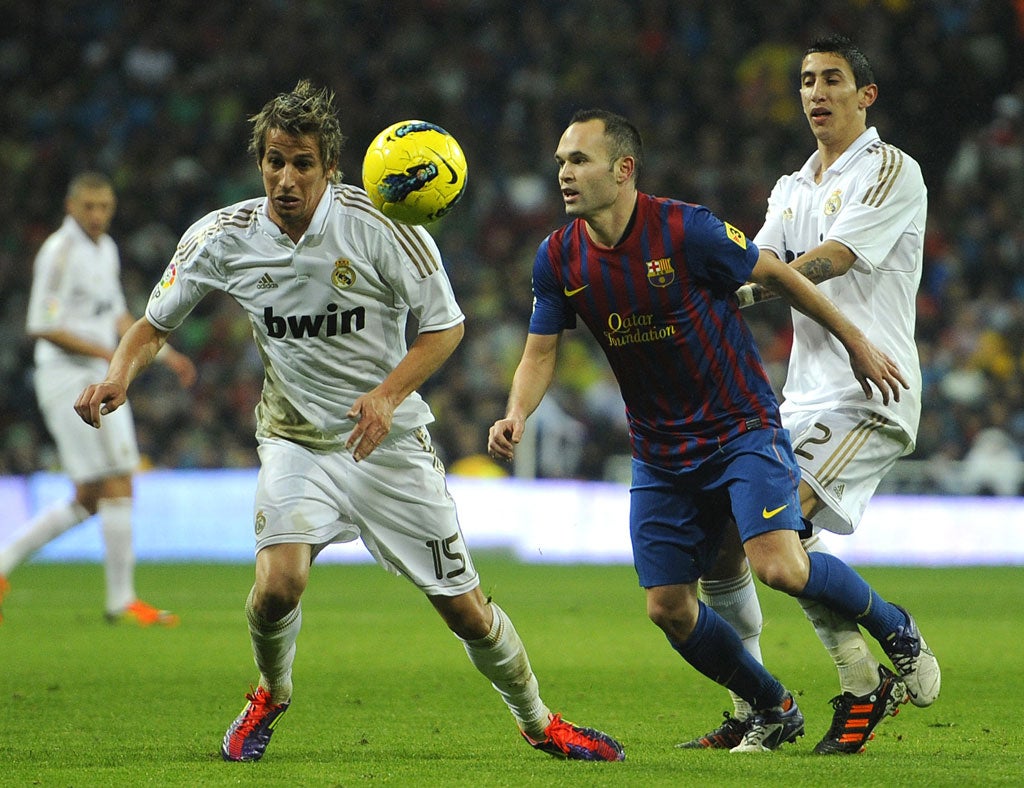La Roja: a journey through Spanish football, By Jimmy Burns
From Castile to Catalonia, Spain's soccer history reflects the rifts and the dreams of a divided kingdom.

Your support helps us to tell the story
From reproductive rights to climate change to Big Tech, The Independent is on the ground when the story is developing. Whether it's investigating the financials of Elon Musk's pro-Trump PAC or producing our latest documentary, 'The A Word', which shines a light on the American women fighting for reproductive rights, we know how important it is to parse out the facts from the messaging.
At such a critical moment in US history, we need reporters on the ground. Your donation allows us to keep sending journalists to speak to both sides of the story.
The Independent is trusted by Americans across the entire political spectrum. And unlike many other quality news outlets, we choose not to lock Americans out of our reporting and analysis with paywalls. We believe quality journalism should be available to everyone, paid for by those who can afford it.
Your support makes all the difference.Those who like to sneer that the world's most popular sport is a grossly exaggerated and often meaningless metaphor for the battle of real life should get hold of this splendid book. At the very least, it points out that if football is essentially a simple game, only relentless hard work, superior imagination and considerable passion can make it so. However, in the extraordinary rise of Spain to the number-one football nation there have been, as Jimmy Burns outlines with great skill, quite a number of other factors.
They include blood, real blood; more than a hundred years of institutionalised, often politically and religiously motivated, hatred; appalling corruption and, worst of all, the conclusion of the dictator Franco and his henchman that the sport which had come to surpass even bull-fighting in defining the national character offered unrivalled potential for government propaganda proclaiming a new and united Spain.
This fallacy was exposed spectacularly enough in 1943, a year after the Generalissimo had led a parade of thousands of soldiers and Falangists down the main artery of Barcelona in a celebration of the anniversary of their civil-war victory, also marked by the release of 3,000 doves. The dénouement came in the stadium of Real Madrid. In the second leg of a cup tie attended by Franco, the home team beat Barcelona, whose rivalry with Real was already the central drama of Spanish football, 11-1. Barcelona had won the first leg at home 3-0, an achievement described by one Madrid newspaper as a "conspiracy against the state".
Before the second game, the Barcelona players were visited in their dressing room by the Count of Mayalde, head of state security. He told them, "Do not forget that some of you are playing only because of the generosity of the regime in forgiving your lack of patriotism." Many years later, the Barcelona physiotherapist reported that he had never been able to banish the memory of that day. He recalled, "The night before the game we had to change our hotel and even then we didn't leave it all evening because we thought we would be lynched. Not far from where we were sitting during the game a man dressed in military uniform kept screaming, 'Kill these red Catalans – kill these Catalan dogs'."
That was not so easy to categorise as an empty threat. Seven years earlier, a Barcelona club president, Josep Sunyol, had been summarily executed after falling into the hands of Franco forces.
La Roja is indeed much more than a journey through Spanish football. It is a story of pain, humiliation – in the early days, workers at the Rio Tinto mines in Andalusia were required to watch English employees play the game for which they were consider ineligible – and ferocious regional rivalry.
That rivalry reached an almost surreal climax in Johannesburg two years ago with victory over the Netherlands in the World Cup final. It was a triumph for skill and beauty and, at its heart, was an example of national unity beyond the dreams of the Generalissimo. The winning goal was scored by Andrés Iniesta, a midfielder of consummate craft who had long been the hero of the Catalans for his brilliant service to Barça. Yet Iniesta grew up on the austere plain of Castile. He was, like Don Quixote, a man of La Mancha.
As Burns painstakingly points out, the glory of Spanish football – which in the next few weeks could deliver a third straight major success when La Roja, the red team, defends its European Championship title – has as many heroes as villains. It is composed of native skills and the brilliant influence of foreigners like Alfredo di Stefano, Johan Cruyff and Lionel Messi. It is made up of the cleverness of Castile, the fury of the Basques, and the mischief of the south.
By some distance, the most popular figure in contemporary Spanish life - at a time of economic peril and political disillusion - is a quiet and conspicuously decent man from Salamanca, Vicente Del Bosque: the national team manager. After Johannesburg, he was elevated to the rank of Marques. It is some story, indeed – and not, when you think about, too bad a metaphor.
Join our commenting forum
Join thought-provoking conversations, follow other Independent readers and see their replies
Comments